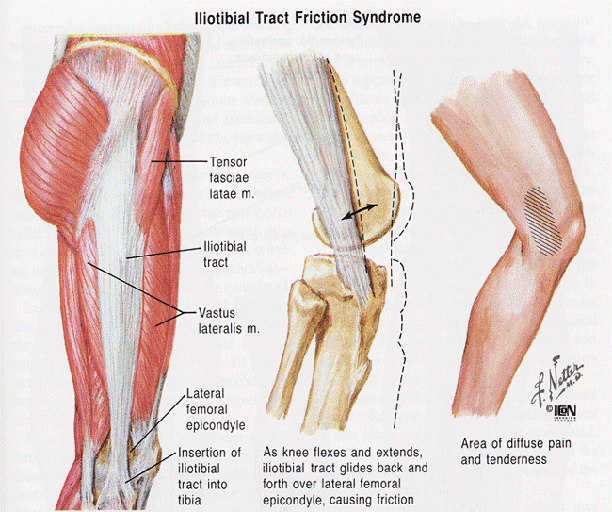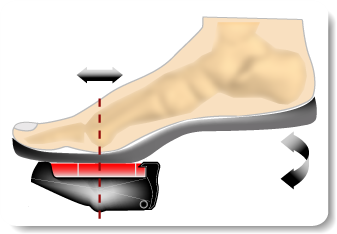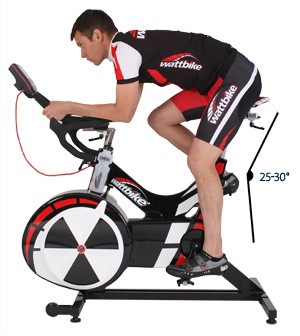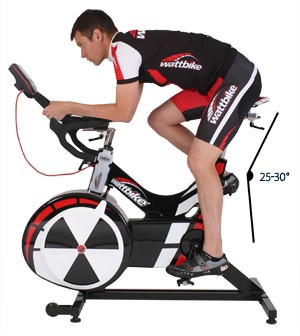How to adjust your bike to prevent knee injuries
With the arrival of spring, we can expect more daylight, nicer weather, and better road conditions. That means it is time to pull out your bicycle from the garage, and go out for a ride.
But before you do, it’s a good idea to get your bike and yourself road-ready. Quick cleaning of the bike, inspecting tire pressure, or checking worn brake pads, are a few of examples of pre-ride maintenance that is beneficial. If you experienced any discomfort or pain from riding your bike last season, it is also worth to check if your bike was properly fitted.
First of all, check your saddle height. Some scientific studies have shown that setting the wrong saddle height causes early onset of exhaustion, decreased pedaling efficiency, or even repetitive strain injuries.
But why is the seat height of the bike so important? Because it dictates your knee movements during pedaling. If the saddle is too low, your knee will be forced to bend more. This will increase compression to the knee cap, and risk of knee cap pain. If too high, you have to extend your knee more in order to reach the pedal at the bottom of pedaling. If the knee is extended more than 30 degrees, your ITB will be rubbing over the epicondyle more often, thus more likely to develop ITB pain.
So, what is the correct height of the saddle? How can I set the saddle height correctly? You may think setting the correct seat height would seem to be such a fundamental part of cycling that experts would agree on the best method. But reality is…they haven’t. Despite a number of methods that are conventionally used for setting a saddle height, there is virtually no or very little scientific evidence to support them and it often leads to the saddle height being adjusted incorrectly. This is because there are so many individual variations in the human body.
Although cycling is considered a knee-friendly exercise because it does not require impact with the ground, the repetitive motion of pedaling can lead to a variety of overuse injuries. The knee is the most common site of cycling injuries, with an estimated 40% to 60% of riders experiencing knee pain. Knee cap pain, called patellofemoral pain is the most common knee problem, followed by outer side knee pain called iliotibial band (ITB) Syndrome.
There are many factors contributing to the development of patellofemoral pain, such as problems with the knee cap alignment, or overuse from excessive training volume. Squatting or deep knee bending are also known to increase stress on the knee cap. Thus, excessive knee bending motions in cycling is also identified as a possible cause of the knee cap pain.
The iliotibial band (ITB) is a thick band of tissue that originates at the upper side of the pelvis, runs down the outer part of the thigh, and crosses the knee to attach into the top part of the shinbone, called the tibia. The ITB performs as a stabilizer of the outer part of the knee through its range of motion. When the knee is flexed, the ITB sits behind a bony outcropping of the thighbone at the knee, called epicondyle. The ITB glides forward across this bony prominence when the knee is extended. This happens at about 30 degrees of knee bending. If the ITB moves across the epicondyle back and forth an excessive number of times, the increased friction between ITB and epicondyle can create inflammation in the outer side of the knee, and causes pain (figure1).
Figure 1
Recently some methods have been developed based on scientific research aiming to reduce over-use injuries in cycling and take a different approach entirely from other methods. One of the widely accepted methods among the bike fitting professionals today is the Holmes method. First, have someone hold your bike. Sit on the saddle and position your foot on the pedal so that your ball of the foot sits on the axle of the pedal (Figure 2).
Figure 2
Then rotate crank all the way down. Position your foot parallel to the ground. In this position, your knee should be at approximately 30 degrees of knee bending. If the knee is excessively extended, lower the saddle. If the knee is flexed more than 30 degrees, the saddle is too low. Adjust the saddle height until your knee achieves 30 degrees of flexion (Figure 3).
Figure 3 (showing 25 to 30 degrees of knee flexion)
Once you adjusted the saddle height, do some test rides. If you have still knee cap pain, adjust your saddle a little higher. If you have outer side knee pain, lower the saddle slightly, but keep your knee bending around 25 to 30 degrees.
This will help to remove your knee pain in many cases, but if you still experience the pain, you might need to further fine-tune the adjustments, such as sliding the saddle forward or backward. There are several reliable bike shops in our area. It’s a great idea to take advantage of their expertise when fitting your bike to your body.
Fitting a bike is no different than fitting other sporting equipment, such as ski boots or hockey skates. A perfectly fitted bike is way cooler than flashy ill-fitted bike. They are more comfortable, mechanically more efficient, and more fun to ride. So, take a little time to check your bike and its saddle height. Spring in Northern Michigan is almost here!!
Illustrations
http://www.drvondawright.com (Figure 1)
http://www.bikefitting.com (Figure 2)
https://wattbike.com (Figure3)







